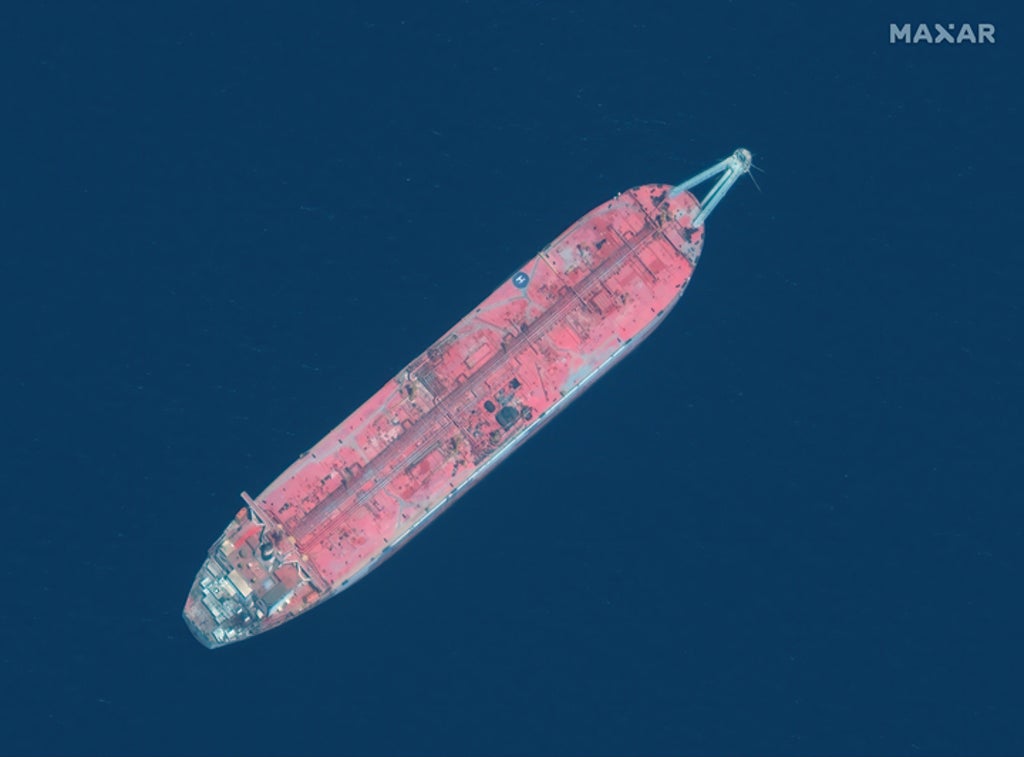
An abandoned oil tanker in the Red Sea containing 1.1 million barrels of oil is at risk of spilling and causing leaving millions of people in Yemen without water.
The FSO Safer was abandoned approximately five nautical miles off the coast of Yemen, in 2015 due to the ongoing civil war in the country.
The tanker is at risk of leaking due to the deterioration of its hull, catching fire through the build-up of volatile gases or through a direct attack.
Talks between the Houthi rebels, the UN-recognised government of Yemen and the UN about the potential spill have stalled despite warnings.
A study led by researchers at the Stanford University School of Medicine used thousands of simulations to predict the impact an oil spill would have on public health.
“Most people can easily imagine how a massive spill might affect the environment, but the effects on public health, especially in a region undergoing a humanitarian crisis like Yemen, are harder to grasp, so we modelled it,” said Benjamin Huynh, a graduate student in biomedical informatics at Stanford and lead order of the study.
“Our hope is that by characterising the public health threat the vessel poses, we can more accurately convey the urgency of the situation, and thus help push international parties to come to a solution.”
The researches modelled the potential spill under a variety of weather conditions, taking into account past wind patterns, currents, sea temperature, salinity and seasonal and daytime fluctuations in weather.
The simulations consistently pointed to catastrophic effects.
A spill could disrupt Yemen’s ports, with estimates from the study showing that it would take six to 10 days for the oil to reach Yemen’s western coastline, impacting Yemen’s ports within two weeks and the port of Aden, located outside the Red Sea, within three weeks.
This could exacerbate shortages of critical supplies and could disrupt 38 per cent of Yemen’s fuel needs, causing fuel prices to spike and risking the closure of hospitals.
Clean water supply to millions of people would be threatened due to contamination of desalination plants. All of Yemen’s Red Sea fisheries would be at risk.
Some 8.4 million people may not be able to access food aid in the event of a catastrophe, while all of Yemen’s Red Sea fisheries would also be at risk.
The study showed that air pollution from a full oil spill would could increase the risk of cardiovascular and respiratory hospitalisations by 5.8 per cent to 42 per cent, depending on the duration and presence of smoke from combustion.
Those directly exposed to the oil, including clean-up workers, would be 530 per cent more at risk of cardiovascular and respiratory hospitalisations due to inhalation of fine particulate matter.
The study also modelled the effects of a fast, efficient clean up effort. However, it found that a six-day clean-up effort would not be more effective than letting the oil simply evaporate, leaving 40 per cent of the oil floating in the water.
“I hope audiences won’t learn about this issue and see it as a foregone conclusion or something that we can reasonably address after it happens,” Mr Huynh said. “Our models show that clean-up efforts won’t be very helpful. The only real solution is to get the oil off the vessel, and there’s still time to do it.”
The study’s senior author, David Rehkopf, an associate professor of epidemiology and population health, and co-director of the Stanford Centre for Population Health Sciences, said: “We knew of course that there would be some negative impacts of an oil spill, but were surprised by how many people would be impacted in the majority of our scenarios.
“We hope that puts more pressure on the international community to offload the oil and prevent this disaster.”







